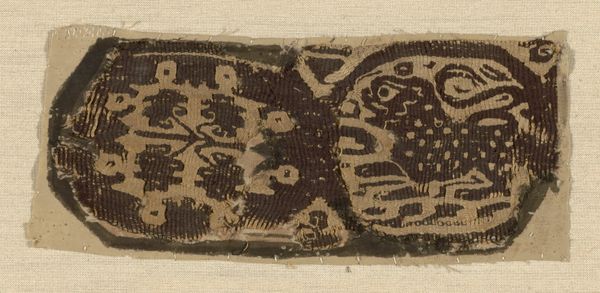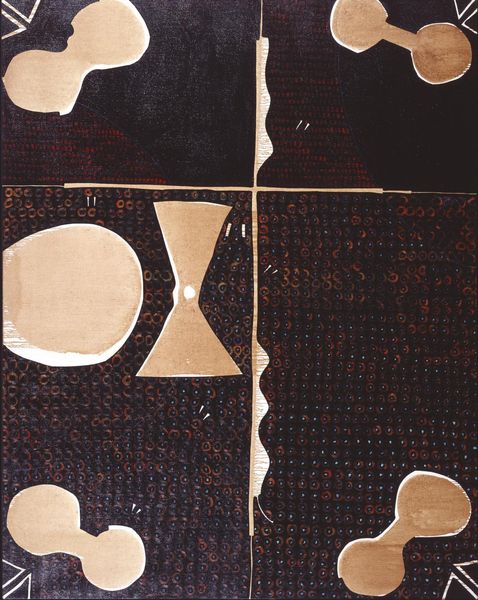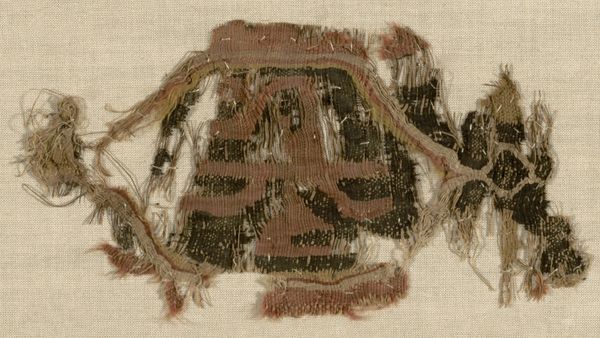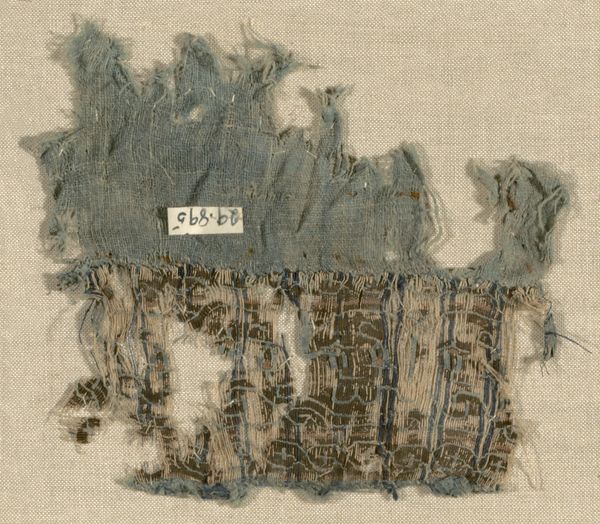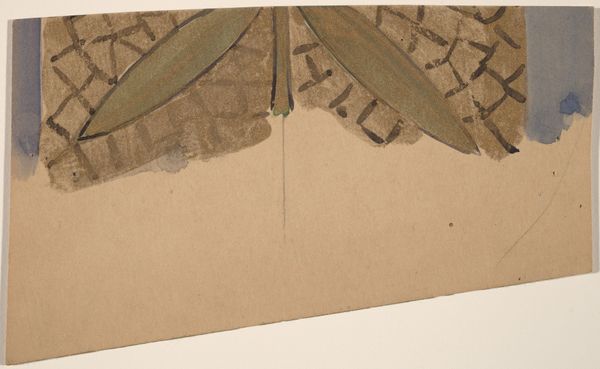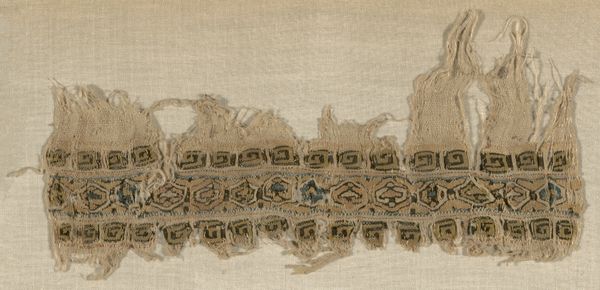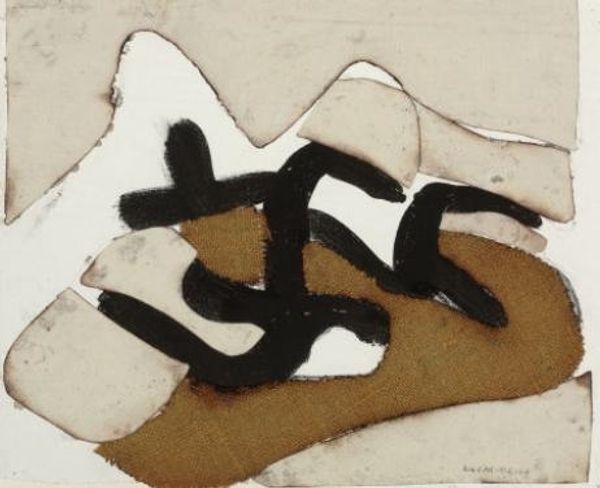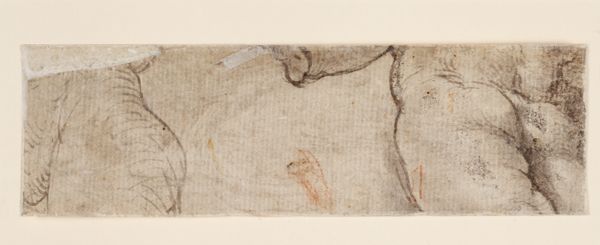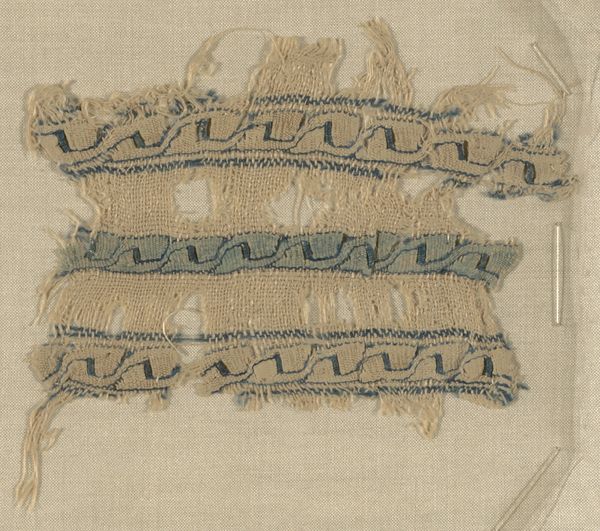
weaving, textile
#
weaving
#
textile
#
ancient-egyptian-art
#
egypt
#
geometric
#
ancient-mediterranean
#
line
Dimensions: 17.8 × 2.5 cm (7 × 1 in.)
Copyright: Public Domain
Curator: This fascinating textile fragment, created sometime in the 4th or 5th century in Egypt, offers a glimpse into the artistry of the Coptic period. Editor: Whoa, it's like looking at a stylized spine, all curves and connected segments. There's something rhythmic and almost unsettling about the repetition, like a mantra made visible. Curator: Yes, and those repeated, stylized motifs—likely wave patterns—aren't merely decorative. They appear often in Coptic textiles and recall both earlier Hellenistic traditions and the powerful symbolic imagery tied to the Nile and water as a life-giving force in ancient Egyptian culture. We believe it's woven using colored threads into the linen. Editor: Water is definitely the first thing that came to my mind, how cool. Those inky shapes almost look like angry waves crashing into each other, with tiny eyes peeking out from the curls, wild! The black against that plain woven ground emphasizes the boldness. I would've loved seeing it originally dyed with indigo or another vivid color on someone's robe. I guess it’s hard to tell how colorful this piece once was from the look of the remnant. Curator: While we can only speculate on the garment it may have adorned, this small fragment holds a considerable amount of cultural information, it suggests a continued emphasis on the spiritual significance of natural elements like water and continuity between ancient pagan beliefs and the burgeoning Christian beliefs taking shape in Coptic Egypt. Editor: It’s like holding a coded message. The artist, working in a very different context than our own, infused this fragment with layers of meaning that, even after all these centuries, manage to send ripples our way. Maybe a symbol of rebirth. It leaves you wondering about their individual intentions, struggles, dreams woven into each little wave, you know. Curator: Indeed. And studying these patterns helps us unravel those very intentions, to understand the interplay between cultural heritage and personal expression in early Coptic art. A bit like finding ourselves reflected in a very old stream, isn't it? Editor: Totally. You can lose yourself trying to read them; like following ripples of ink and suddenly being washed away. I would wear a dress covered in these black squiggles, even just on a thin line, I think, and let those protective eyes wash over me!
Comments
No comments
Be the first to comment and join the conversation on the ultimate creative platform.
